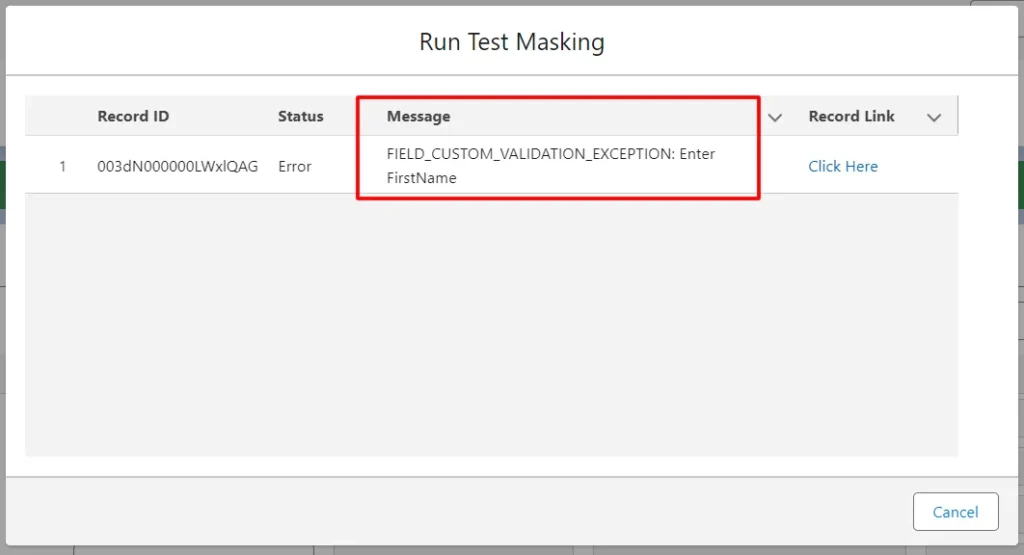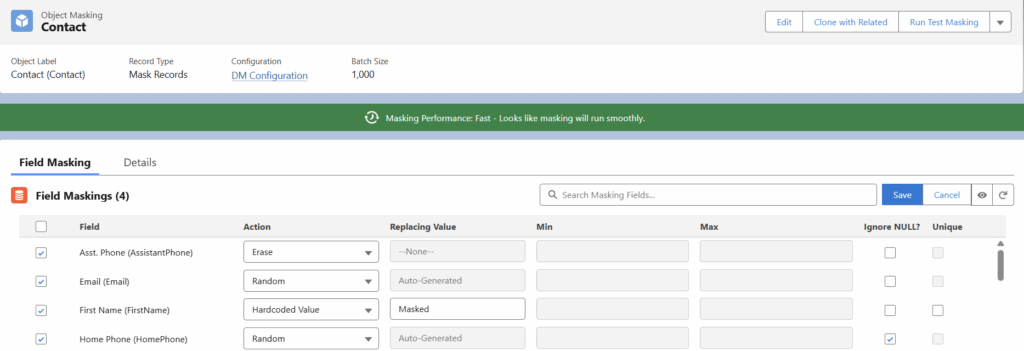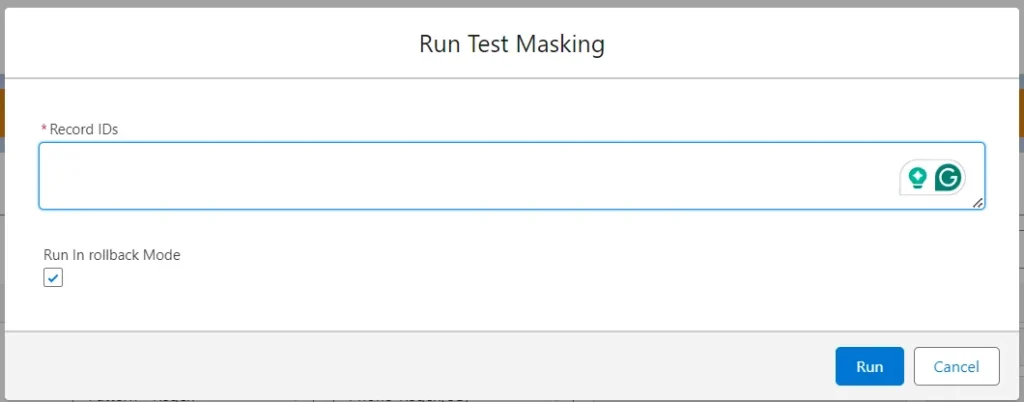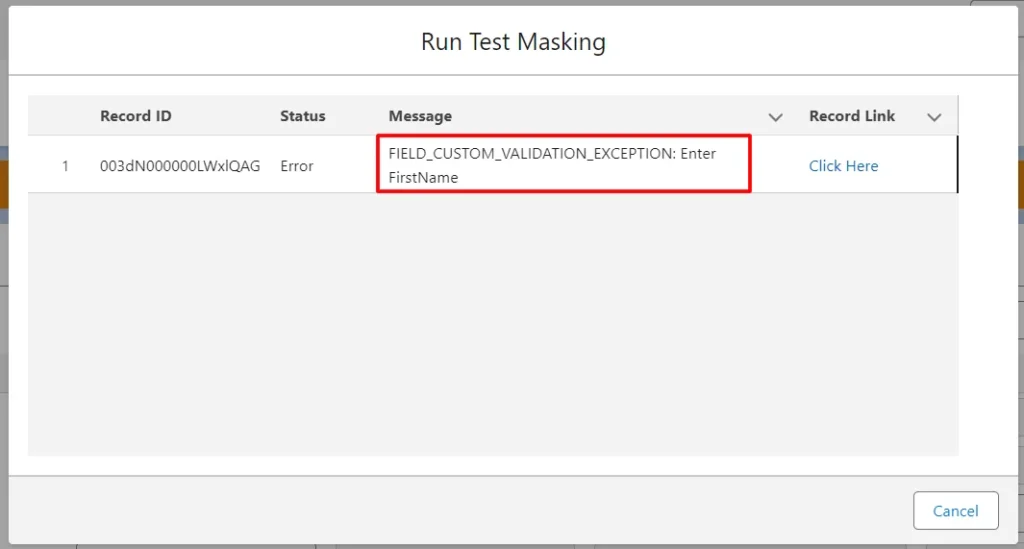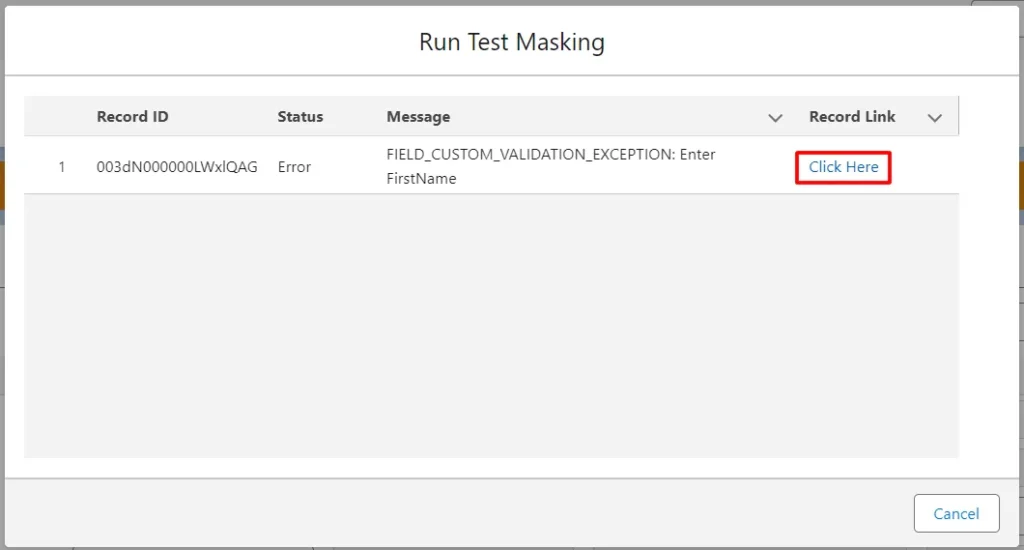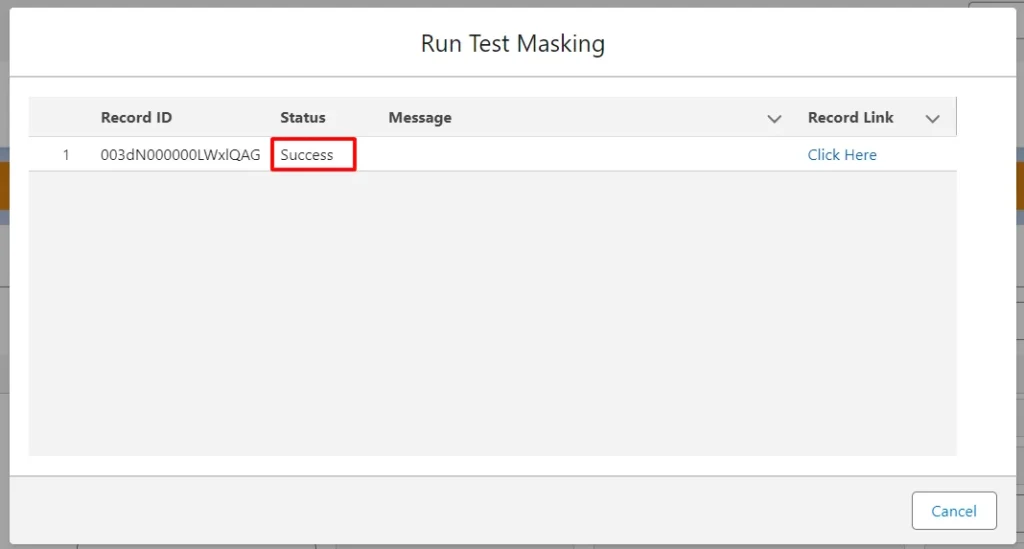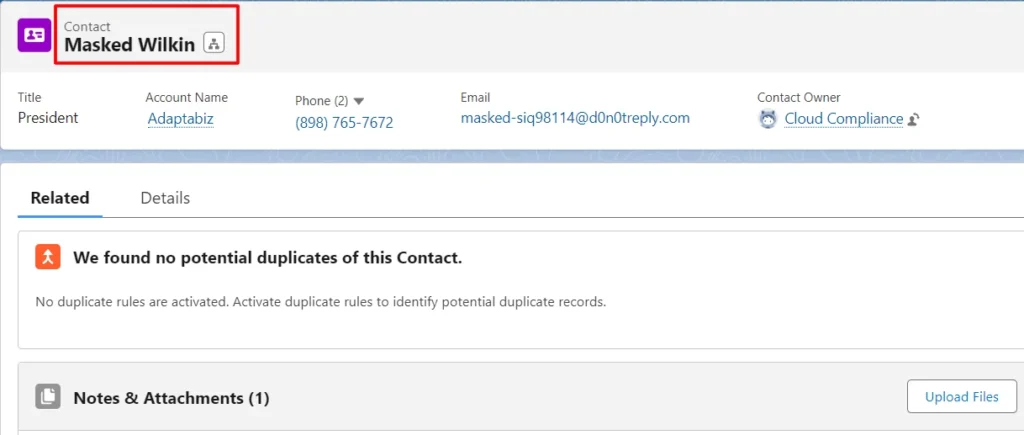Salesforce organizations often have multiple automation processes, which can sometimes interfere with data masking operations.
DataMasker offers a solution by allowing users to test masking to identify any potential conflicts with existing automation.
This feature ensures that no execution records are created during the test, providing a safe way to verify compatibility.
After running the test masking, users can immediately view the results on the same screen, enabling quick and efficient troubleshooting.
During the test masking process, users can specify the record IDs of a particular object in a comma-separated format.
Test masking can be executed in two modes: Rollback mode and Non-Rollback mode.
RollBack Mode
When the rollback mode checkbox is checked, records do not get masked as per the configuration, but it will show the error messages if any automation restricts the masking.
Non-Rollback mode
When the rollback mode checkbox is unchecked, the records are masked as per the configuration, and if there is an error in processing the records, an error message will appear.
Solution Steps
- Step 1: Go to the Configuration tab and create the configuration. Add object and field masking.
Step 2: Click on the button ‘Run Test Masking’
Step 3: Add the record IDs, separated by commas, for which the user wants to check the masking and check the checkbox ‘Run in rollback mode’.
Step 4: Click on the Run button
Step 5: If any automation restricts the masking, the user will see an error message; if not, the status will be Successful.
Step 6: Click the link ‘Click Here’ to see the record on which masking was run.
Now repeat the same process, uncheck the checkbox ‘Run in rollback mode,’ and remove the validation to make the masking successful.
Step 7: Now click on the ‘Click Here’ link to see the masking on the respective record. Due to running in the non rollback mode the record will be updated as per the configuration.
This is how by running test masking, users can identify and remove any restrictions that might interfere with the actual masking process before it is applied to a large dataset.
This proactive approach ensures that potential issues are resolved in advance, facilitating a smoother and more efficient data masking operation.


